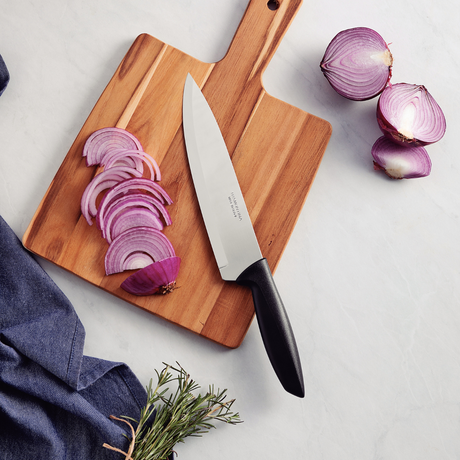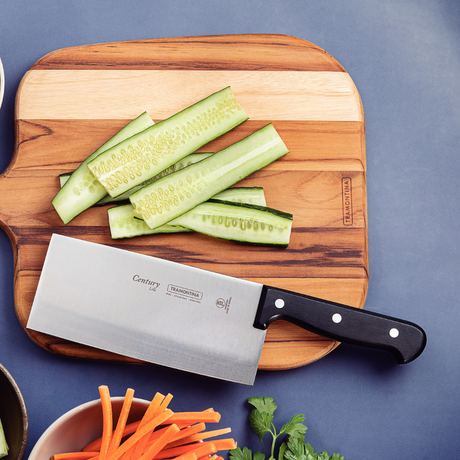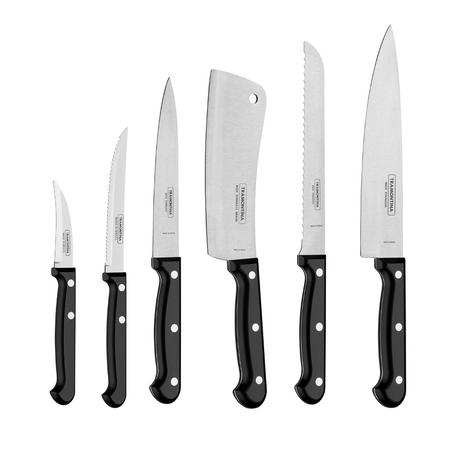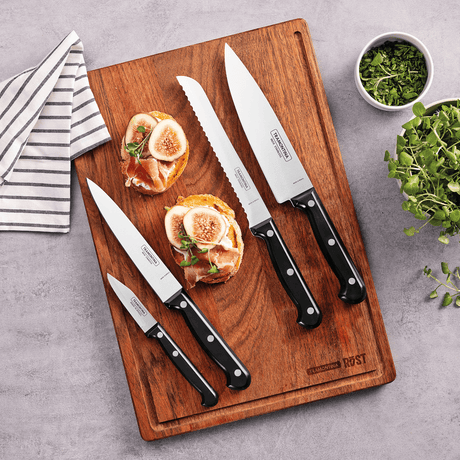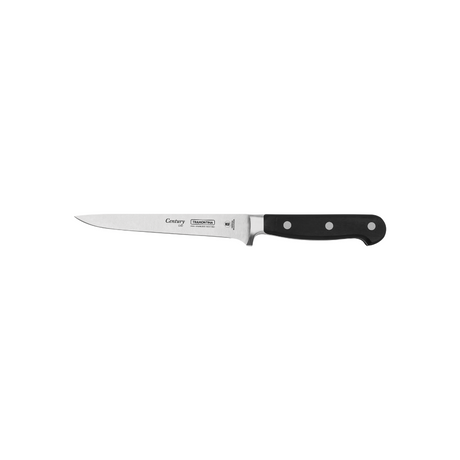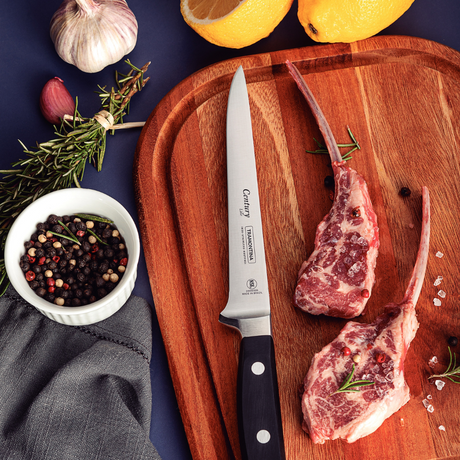- SGD 8.90
SGD 15.00Unit price /Unavailable - SGD 65.90
SGD 130.00Unit price /Unavailable - SGD 39.90
SGD 70.00Unit price /Unavailable - SGD 18.90
SGD 25.00Unit price /Unavailable - SGD 14.90
SGD 25.00Unit price /Unavailable - SGD 17.90
SGD 40.00Unit price /Unavailable - SGD 12.90
SGD 25.00Unit price /Unavailable - SGD 45.90
SGD 80.00Unit price /Unavailable
Tramontina boning knives and cleavers are tough, precise tools for any kitchen. They're not just knives; they're made to help you handle the hardest prep work easily. The moment you hold one, you'll feel how sturdy and balanced it is, ready for whatever you throw at it.
The key to their great performance is the blade. It's forged from high-quality, high-carbon stainless steel. This material is super strong and sharpened to give you clean, precise cuts every time. Whether you're breaking down chicken, carefully deboning meat, or powerfully chopping through hard vegetables and small bones, these blades slice through with little effort. This means less waste and better-looking food.
Our knives are also designed for comfort. The handles are shaped to give you a great grip and control, even when your hands are wet. This keeps you comfortable and focused, even during long prep times.
Built Tough, Stays Sharp
Tramontina boning knives and cleavers are truly built to handle daily use in busy kitchens. Their tough build shows how committed we are to making durable tools. This means your knives won't just work well now; they'll keep performing for years, becoming reliable partners in your cooking.
We make sure our knives cut efficiently, stay sharp for a long time, and are easy to clean. The high-carbon stainless steel holds a great edge and washes up simply, so your knives are always ready. This mix of performance and practicality makes these tools a must-have for both home cooks and professional chefs. They know a good knife isn't just about the first cut, but about doing its job well, consistently.
A Century of Reliable Tools
When you choose a Tramontina boning knife or cleaver, you're getting a product from a trusted history. We've been making high-quality kitchen essentials for over a hundred years, and our reputation is simple: we make tools that just get the job done, exceptionally well, every single day.
Frequently Asked Questions
What is the best way to sharpen a boning knife?
What is the best way to sharpen a boning knife?
The best way to sharpen a boning knife is by using a whetstone or a manual sharpening system that allows for precision angle control. Boning knives have thin, flexible blades that require a sharp, fine edge for clean and precise cuts, especially around bones and joints.
Is a straight or curved boning knife better?
Is a straight or curved boning knife better?
Whether a straight or curved boning knife is better depends on what you're cutting and your personal preference. A curved boning knife is best for fish, poultry, and trimming fat, as the curved blade makes it easier to follow contours and maneuver around bones. Whereas a straight boning knife is ideal for larger cuts of meat or beef, where you need long, clean strokes to separate muscle from bone.
What blade length should I look for in a boning knife?
What blade length should I look for in a boning knife?
The ideal blade length for a boning knife is typically 5 to 6.5 inches. This length offers the right balance between precision and reach, allowing you to work around bones without losing control. A 5 inch boning knife is best for poultry, small fish and detailed trimming work, while a 6 inch boning knife is more versatile, more suitable for beef, pork and larger cuts.
How do I properly use a boning knife?
How do I properly use a boning knife?
To properly use a boning knife, follow these techniques to ensure safety and efficiency:
- Grip the handle near the bolster firmly for better control
- Start with the pointed tip to pierce around joints and bones.
- Make smooth, shallow cuts close to the bone to remove meat cleanly.
- Use a pulling motion to separate the meat instead of forcing the blade through.
- Let the knife’s flexibility work with you, especially on curved cuts.



